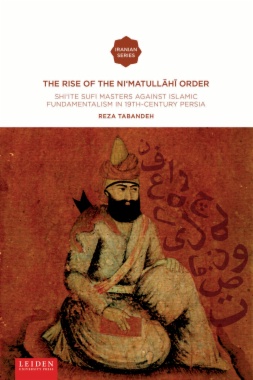Sufi mysticism’s surprising revival in nineteenth-century Shi‘ite Persia.
Islamic mysticism experienced a remarkable revival in nineteenth-century fundamentalist Persia. Sparked by the return of the Sufi master Ma‘um Ali Shah from India, the Ni‘matullāhī Order rapidly spread throughout the region amid fierce opposition from Shi‘te clerics. Rise of the Ni‘matullāhī Order charts the movement’s unlikely rise across three generations of Sufi masters. Reza Tabandeh demonstrates how Ma‘um Ali Shah, Majdhub Ali Shah, and Mast Ali Shah sustained the revival by reinterpreting classical Sufi teachings for a Shi‘ite context.

